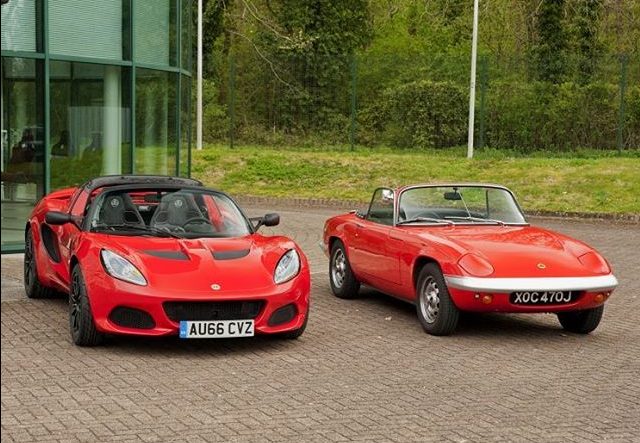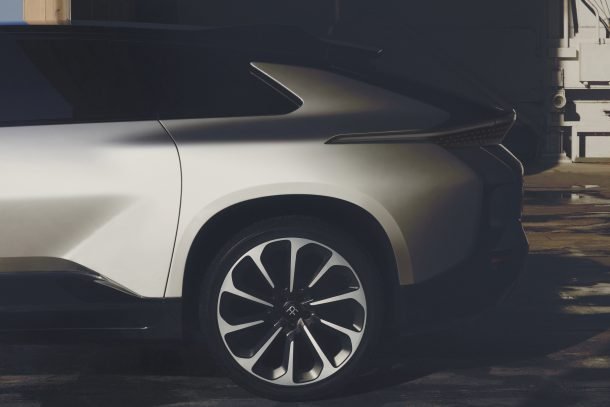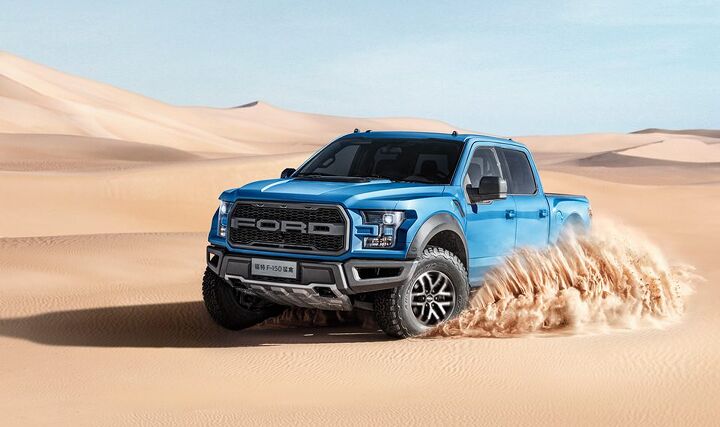#China
Automakers Continue to Prioritize Technology Trade Shows and China
Automakers continue to snub mainstream automotive trade shows for CES, which is swiftly becoming one. Compared to Las Vegas’ Consumer Electronics Show, Asia’s nascent tech expo is exceptionally small but that hasn’t prevented automakers from taking an interest. Only in its third year, CES Asia hosted General Motors, BMW, Mercedes-Benz, Honda, Hyundai, and Volvo.
In fact, several of the event’s large rooms housed nothing but products stemming from automotive manufacturers — underlining how automakers need to be perceived in 2017. China’s massive population is churning out heaps of new drivers everyday, making it the primary growth market for many global brands. Combine that with the country’s aggressive push into green cars — with a public that is perpetually hungry for tech-laden vehicles — and CES Asia attendance was compulsory for many.
Desperate Times Lead Hyundai Into an All-Ideas-On-Deck Strategy
Amid stagnating U.S. sales, a crash-dive in China, and a product lineup not optimally suited for growth, Hyundai is furiously crafting a salvation plan.
In North America and other utility-loving countries, the strategy is clear: more crossovers and a significant product shakeup. The little Kona is already on the way, though perhaps not as quickly as Hyundai had hoped.
China, however, presents a serious problem for the automaker. What was supposed to be a growth market for the company has now turned into the opposite. Hyundai’s share of the market has shrunk to 5 percent from last year’s 8.1 percent, which was down from years past. In March alone, after news of South Korea’s installation of a U.S.-supplied anti-missile defense system, Hyundai and Kia sales dropped 52 percent.
Determined to make the Chinese fall back into love, the automaker has a plan brewing.
China's Geely Purchases Lotus, Plans to Restore the Brand's Lost Luster
China’s Zhejiang Geely Holding Group Company has decided to purchase a 49.9 percent stake in Proton from Malaysian conglomerate DRB-Hicom and a majority share of the United Kingdom’s Lotus Cars.
Geely seems to have an affinity for other manufacturers and eclectic tastes — not just because it has received criticism for modeling its own cars after everything from Roll-Royce to Toyota, but because it also purchased Volvo Cars and the London Taxi Company. This could be extremely good news for Lotus, which always seems to be in a bit of a bind. Whether or not you like the idea of a Chinese company owning distinctively European brands, Geely helped Volvo come back from the brink and has committed to doing the same for Lotus.
“Reflecting our experience accumulated through Volvo Car’s revitalization, we also aim to unleash the full potential of Lotus Cars and bring it into a new phase of development by expanding and accelerating the rolling out of new products and technologies,” stated the company in its official announcement.
LeEco Lays Off Majority of U.S. Employees; Likely More Bad News for Faraday Future
China’s Netflix equivalent, LeEco, confirmed it would be eliminating the better part of its North American workforce today. LeEco has recently gotten involved in a myriad of expensive tech-focused endeavors that have wound up screwing its finances six ways from Sunday. One of those projects was serving as the primary financial backer of America’s Faraday Future, the electric car company we’ve been scrunching our faces at for over a year now.
Faraday seems to have encountered or created every problem an automotive startup could imagine and, with its primary source of income shrinking its U.S. employee base by 70 percent, things have never looked worse.
China's 2017 BYD E6 Granted CARB Certification, But Retail Sales Still a Question Mark
For those of you not glued to the latest in Chinese electric car news, the BYD (Build Your Dreams) E6 was the best-selling electric vehicle in the world’s most populous country last year. Forget about Nissan or Tesla — BYD is the real electric stud overseas.
The E6 is a conventional-looking four-door crossover (or tall hatch, if you prefer) offered in a number of markets, including the United States. However, here the E6 is marketed as an “electric taxi” and offered only to fleet buyers. A handful have arrived already, but the Berkshire Hathaway-backed automaker has larger plans for the U.S.
Shocking No One, Acura Considers Bringing the CDX Stateside
If you’re not familiar with Acura’s subcompact CDX crossover, take a gander at Honda’s HR-V and think of China. Right now, that’s the only country that gets to buy the HR-V-based utility, but things could change.
Acura is reportedly mulling a trans-Pacific journey for the little CUV as it takes stock of its meager U.S. utility lineup.
Sedans and Missiles: Hyundai Slams Into Another Sales Roadblock
The frustration never seems to end for Hyundai executives. After last year’s Korean labor strife and political scandal, the brand now faces flagging fortunes in the all-important North American market, all thanks to a car-heavy lineup that once guaranteed piles of profit.
Now, the automaker faces the same problem in another global growth engine — China. While that market has also discovered its love for crossovers and SUVs, there’s another problem that Hyundai can’t turn around by rushing a new vehicle to production. Hyundai, it seems, can’t do a damn thing about high-altitude defensive missiles.
After Fiery China Crash, Model X Rear Doors Are Still Causing Problems for Tesla
The fiery aftermath of a crash on a Chinese highway has Tesla on the defensive, rebuffing claims the rear “Falcon Wing” doors of the Model X pose a danger to passengers trying to escape.
Unlike past high-profile crashes, this story doesn’t concern the potential risks of the vehicle’s Autopilot system, as it seems the cause of the accident can be entirely attributed to driver error. The chauffeur-driven Model X reportedly hit cement barriers in Guangzhou, China, while travelling at 47 miles per hour, spinning the vehicle around and sparking a head-on impact from a Ford Focus.
The vehicle’s underfloor battery pack, damaged and exposed to oxygen, erupted in flames. However, it’s what happened next that prompted a $1 million lawsuit against Tesla.
Cadillac Prepares For Perpetual Party, Forecasts Buoyant U.S. Auto Sales Demand While Relying On China
“Levels that were once seen as excessive are now sustainable.”
—Uwe Ellinghaus, Chief Marketing Officer, Cadillac
Cadillac expects to see auto sales in the United States in calendar year 2017 fall just below 2016’s best-ever results, which GM’s premium brand considers a positive sign for the U.S. auto industry and Cadillac.
While the decline reported America’s auto industry in March 2017 drew headlines because 2017’s first-quarter encompassed three consecutive months of year-over-year decline, Cadillac’s chief marketing officer, Uwe Ellinghaus, views the results through another lens.
“What they call a cooling off I say is the best thing that has ever happened,” Ellinghaus told Automotive News. “We don’t see that the party is over. It’s continuing.”
Cadillac? Party? Huh?
Honda CR-V Hybrid Debuts in China, Waits to Leap Across Pacific
It’s really a matter of when, instead of a question of “will it?”
This week’s Shanghai auto show saw the premiere of an electrified Honda CR-V that should hit Chinese dealers in the second half of this year. When that vehicle will get a chance to battle rivals on American turf remains a secret, but it’s abundantly clear that the model has a future on this continent.
Ford Has No Plans For China's Taurus To Become America's Taurus
The Ford Taurus’s North American demise is not unanticipated. Full-size car sales are flagging. The Taurus nameplate’s positive brand recognition is based on the success it enjoyed in another era. And Ford already revealed a new China-specific Taurus, based on the same CD4 platform as the Fusion and Lincoln Continental, with no announcement regarding the import of that vehicle to North America.
It also seems Ford, riding high on a wave of crossover and SUV sales on this side of the Pacific, won’t be bringing that Taurus to America anytime soon.
Lynk & Co Stalls Sales Launch for U.S. and Europe
Unlike the majority of Chinese automakers looking to the West, Lynk & Co seemed well-poised to bring a physical product to America — even though it had a share-based business model and a distribution plan that seemed counterintuitive. However, Zhejiang Geely Holding Group has announced that it is delaying Lynk & Co’s product launch for Europe and the United States.
The reasoning behind the stall revolves around that unconventional distribution model, which initially involves online ordering and at-home deliveries. Zhejiang Geely now feels that Lynk needs more time to cultivate a company-owned dealership network.
(Not) Coming To America: China's Best-selling Automaker Fingers Trump for Decision to Avoid U.S.
SAIC Motor, China’s largest state-owned automotive manufacturer, is canceling its plans to export vehicles into North America. Likely fearful of the current administration’s trade proposals, SAIC is blaming President Donald Trump for its hesitation to enter the Western market.
Of course, the Chinese automaker isn’t ruling anything out entirely. Michael Yang, the executive director of SAIC’s international division, explained at the Shanghai motor show that the company might resume its plans for U.S. expansion once trade tensions ease between the two countries. As the Trump administration hasn’t exactly celebrated the idea of imported goods and foreign manufacturing, it could be a long wait. In the meantime, SAIC Motor will be focusing its efforts on the European market.
Stretched Chinese Jeep Concept Could Preview Chrysler Crossover
Chinese car buyers are big fans of stretched American midsize sedans, and extra-long crossovers are seen as the next logical way for U.S. automakers to woo buyers into the brand.
In China, where Jeep began production of the Cherokee in late 2015, a new vehicle has appeared online ahead of the Shanghai Auto Show. Rather than a longer Cherokee, the concept in the image seems to preview an entirely new three-row Jeep that could see a different body and badge in North America.
Ford CEO Mark Fields Seems Stoked to Send More Product to China, Especially Trucks
Ford’s Mark Fields had plenty of positive things to say about last week’s meeting between Donald Trump and Chinese President Xi Jinping. After spending months of his campaign accusing China of stealing American jobs, Trump left the conference optimistic at the prospect of improving the relationship between the two countries.
That’s welcome news for Ford, which wants to dramatically expand its presence in Asia over the coming years. The automaker has already decided to launch Lincoln models in the Asian market, hoping to piggyback off Buick and Cadillac’s success in China. On Thursday Fields also outlined a company decision to have 70 percent of all Ford nameplates sold in China by 2025 be part or fully electric — helping the company meet stricter emission standards and maintain volume in the East.






























Recent Comments